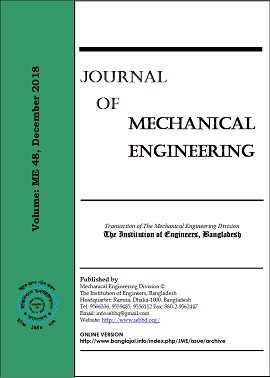Effect of Fe, Ni and Cr on the corrosion behaviour of hypereutectic Al-Si automotive alloy in 3.5% NaCl solution at different temperature and velocity
DOI:
https://doi.org/10.3329/jme.v48i1.41083Abstract
The main focus of this study is to examine and evaluate the effect of Fe, Ni and Cr on the corrosion behaviour of hypereutectic Al-Si automotive alloy in 3.5% NaCl solution. Experimental information are attained using conventional gravimetric measurements under different solution temperature and velocity and complemented by resistivity, optical micrograph, scanning electron microscopy (SEM) and X-ray analyzer (EDX) investigations. All the alloys show the negative corrosion rate due to formation of a very thin film of aluminum oxide and hydroxid on the surface. Intermetallic particles in the alloys play a major role in passivity.
Temperature accelerates the corrosion and the higher velocity breakdown of the passive film. It also affects the resistivity of the alloys. The results from this study also indicate that the temperature and velocity increase the negative corrosion rate of the alloys due to higher rate of chemical reactions. SEM and EDX analysis indicate that the surfaces compose with a thin layer of aluminum oxide and hydroxide corrosion products.
Downloads
266
290

